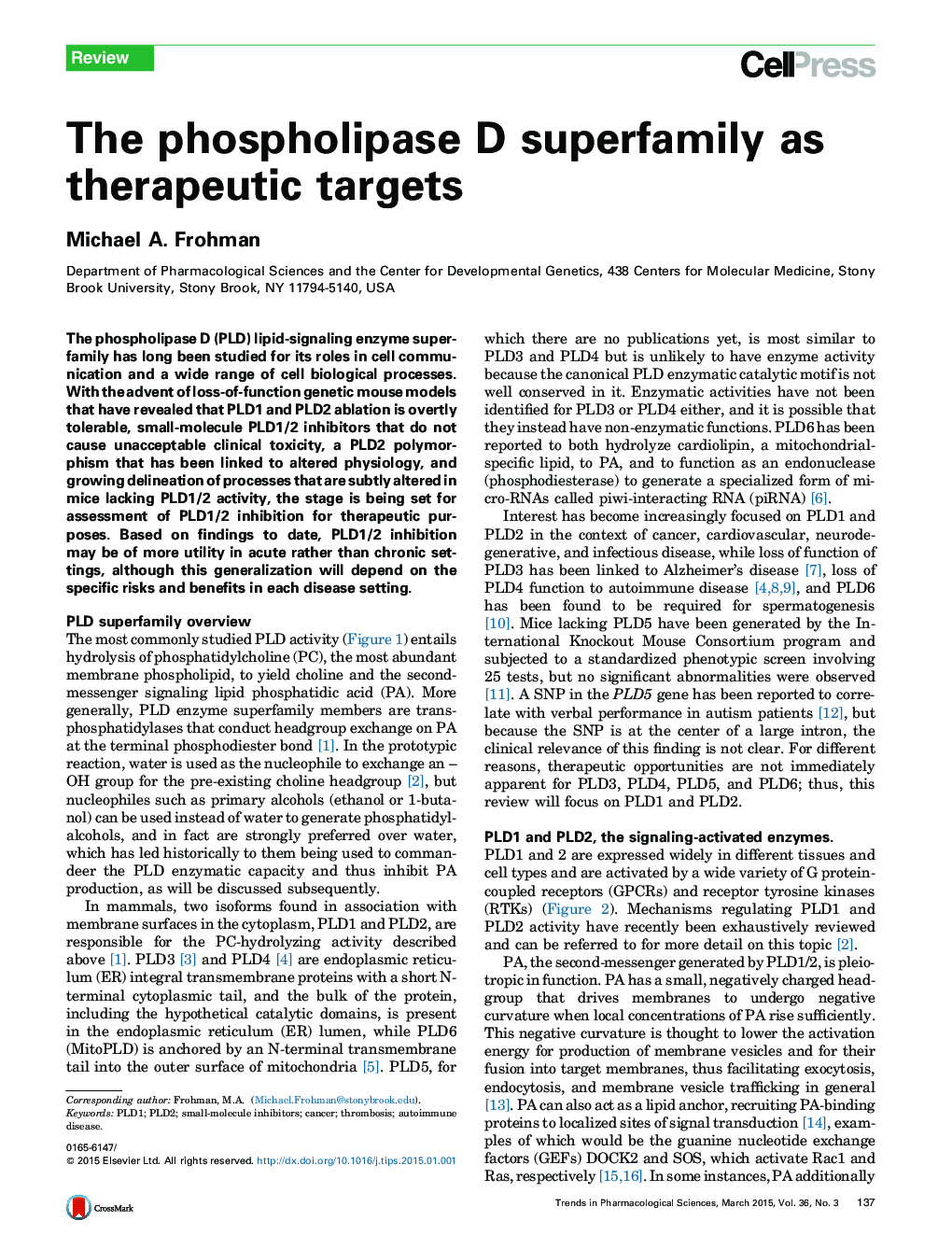| Article ID | Journal | Published Year | Pages | File Type |
|---|---|---|---|---|
| 2572463 | Trends in Pharmacological Sciences | 2015 | 8 Pages |
•Phospholipase D signaling underlies many cell biological and physiological processes.•PLD ablation and small-molecule inhibitors are well-tolerated.•PLD inhibition may be useful in several disease settings including cancer.•Others include autoimmunity, viral infection, and thrombotic and neurodegenerative disease.
The phospholipase D (PLD) lipid-signaling enzyme superfamily has long been studied for its roles in cell communication and a wide range of cell biological processes. With the advent of loss-of-function genetic mouse models that have revealed that PLD1 and PLD2 ablation is overtly tolerable, small-molecule PLD1/2 inhibitors that do not cause unacceptable clinical toxicity, a PLD2 polymorphism that has been linked to altered physiology, and growing delineation of processes that are subtly altered in mice lacking PLD1/2 activity, the stage is being set for assessment of PLD1/2 inhibition for therapeutic purposes. Based on findings to date, PLD1/2 inhibition may be of more utility in acute rather than chronic settings, although this generalization will depend on the specific risks and benefits in each disease setting.
